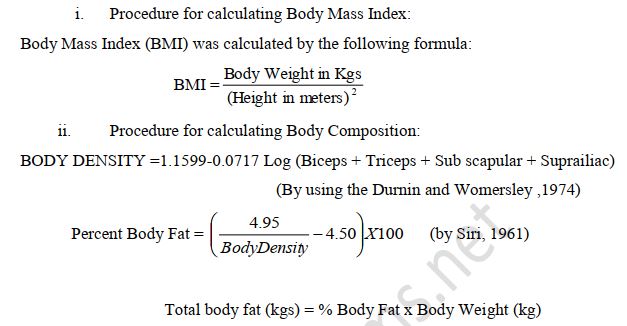MEAN ELECTRICAL AXIS OF HEART IN RELATION TO BODY MASS
Abstract
The study was conducted on 51 healthy male volunteer students in March-2008. The volunteers were taken from the various departments of Punjabi University, Patiala. All volunteers were adults within the age range of 18 to 23 years with no vascular abnormalities. They were divided into three groups based upon BMI values (Gr.-I BMI below 20; Gr.-II BMI between 20 to 25 and Gr.-III BMI above 25) All the anthropometric and ECG measurements were carried out under controlled conditions in quiet air-conditioned room with temperature and humidity levels controlled at 23 ± 20 Celsius and 55% ± 5% respectively using standard equipments and techniques. It was concluded that Fat deposition and Skinfold thickness was reported minimum in Gr.-I followed by Gr.-II and maximum in Gr.-III. The results shows that electrical activity direction of atria and the ventricles during depolarisation has shown non-significant differences in all BMI Groups, but there is a trend of shifting QRS axis towards the left with increase in BMI. It is observed that body weight is positively correlated to QRS duration(r= 0.284, Significant at 5%), it means over weight were more prone to develop aberration in the ventricular depolarization and blocks in the ventricular conduction system. It is also examined that greater BMI has shifted the electrical activity of repolarization of the ventricles to the left (BMI is negatively correlated to the direction of ventricular repolarization)
Downloads
References
Bayes de Luna . Ventricular Blocks In: Clinical Electrocardiography 1993 ; 207-240.Bayes de Luna ,(1993)
Durnin J.V.G.A and Womersely, Body fat assessed from total body density and its estimation, from skinfold thickness measurements on 481 man and women aged from 16-79 years. Brit. J. Nutr. 32:77-97, 1974.
Hansen, O.S., and King , F.W.; Am Rev.Tuberc.22: 320,1930.
Hansen,O.S., And Maly, W.H.; Am. Rev. Tuberc., 27:200, 1993.
Schamroth L. Electrical axis In: Schmroth C.(ed) An introduction to Electrocardiography , Blackwell Science Ltd. Massachusetts1990;34-48
Siri, W.E. Body Composition from fluids spaces and density, analysis of method. In: Techninques for measuring body comoposition edited by J. Brozek (ed.) National academy of Sciences. Washington, D.C. 223-244, 1974.
Weiner, J.S. and Lourie, J.A. : Human Biology : A guide to field methods. IBP No. 9 Blackwell, London 1969
Zehender M., Meinertz T., Keul J., et al: ECG variants and cardiac arrhythmias in athletes: Clinical relevance and prognostic importance. Am heartj 119:1378-1391,1990.















